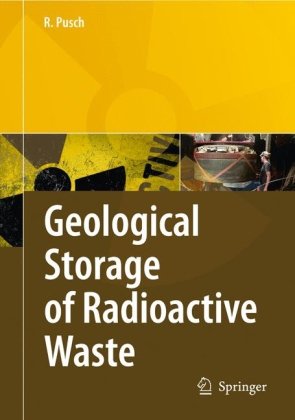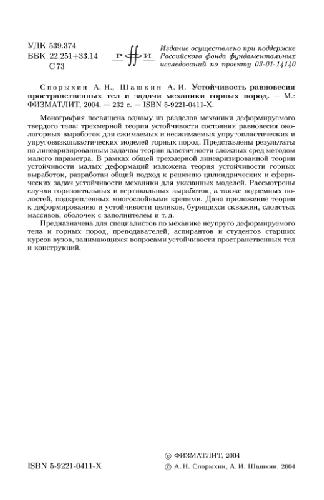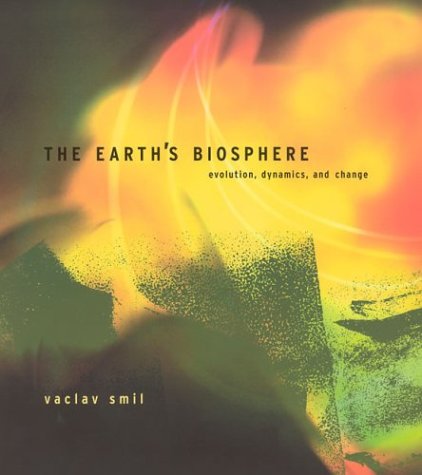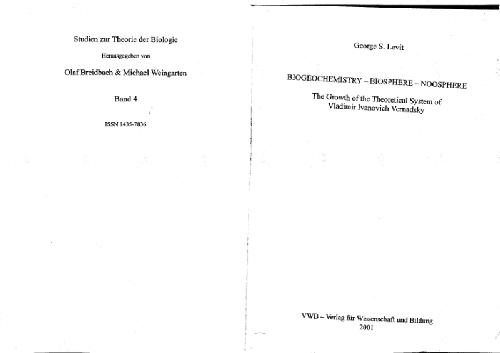Roland Pusch3540773320, 9783540773320
Table of contents :
cover-large……Page 1
front-matter……Page 2
Index……Page 0
National and International Work……Page 18
Basic Principle of Final Storage of Hazardous Waste……Page 19
The CROP Project……Page 20
Salt Rock……Page 22
The Low Risk Deposition Technology Project……Page 23
Options for Disposal of HLW……Page 26
1.1 Rock Types Considered for HLW Disposal……Page 29
1.1.2.1 General……Page 30
1.1.2.2 Categorization of Structural Elements……Page 31
1.1.2.3 Evolution of Rock Structure……Page 32
1.2.1 Evolution of Discontinuities……Page 33
1.2.2 Regular or Random Structural Constitution……Page 36
1.3 Salt Rock……Page 38
1.4 Clastic Clay……Page 40
1.5.1 Crystalline Rock……Page 41
1.5.2 Salt and Argillaceous Rock, and Clastic Clay……Page 43
2.2.1 General……Page 45
2.2.2 Rock Strength……Page 46
2.2.3 Scale Dependence of Strength and Conductivity……Page 47
2.3.2 Clastic Clay……Page 56
2.4.1.1 Disturbance by Stress Changes……Page 58
2.4.1.2 Disturbance by Construction — Blasting……Page 61
2.4.1.4 Disturbance by Boring — TBM Technique……Page 71
2.5.2 Overview of Rock Issues……Page 73
3.2 HLW……Page 87
3.3.1 Design and Material……Page 90
3.3.2 Physical Performance of the Presently Proposed SKB Canister……Page 92
3.3.2.1 Evolution of Temperature……Page 93
3.3.2.3 External Pressurization……Page 94
3.3.3 The HIPOW Canister……Page 98
3.3.4 Chemical Integrity of Copper Canisters……Page 99
3.4.1 The Role of Clays in a Repository……Page 100
3.4.2 Smectite Minerals……Page 101
3.5.1 Function……Page 104
3.5.2 Evolution of the Buffer……Page 108
3.5.3 Wetting Rate of the Buffer……Page 109
3.5.4 Mechanical Processes in the Buffer……Page 114
3.5.5 Maturation of Buffer Submerged in Smectite Mud……Page 115
3.5.6.1 Migration of Liquid Water and Vapour……Page 118
3.5.6.2 Swelling and Compression……Page 119
3.5.7.1 General……Page 121
3.5.7.2 “COMPASS”, a Code Used for Predicting the Evolution of Buffer in Deposition Holes……Page 123
3.5.8.1 Comparison of Predictions and Recordings……Page 125
3.5.8.2 Migration of Liquid Water and Vapour……Page 127
3.5.9.1 Reference Case……Page 128
3.5.9.2 Theoretical Simulation of the Evolution of the Buffer by Using the Codes……Page 132
3.5.10.1 General……Page 133
3.5.10.2 Stress and Strain……Page 134
3.5.10.3 Creep……Page 136
3.5.10.4 Conclusive Remarks Concerning the Stress/Strain Behaviour of Buffer and Backfills……Page 142
3.5.11.2 Conversion of Smectite to Non-expanding Minerals……Page 143
3.5.11.4 Laboratory Experiments……Page 146
3.5.11.5 Geochemical Modelling……Page 159
3.5.12.1 Interaction of Canister Material and Buffer Clay……Page 160
3.5.12.2 Interaction of Concrete and Backfills of Expandable Clay……Page 166
3.5.13.1 Impact of Gas Under Pressure……Page 170
3.5.13.2 Vapour Effects……Page 171
3.5.13.3 Microbial Effects……Page 174
3.5.13.4 Influence of Radiation……Page 175
3.5.13.5 Influence of Electrical Potentials……Page 176
4.2.1 The Complete Repository……Page 183
4.2.2 Alternative Concepts……Page 186
4.3.3 Buffers……Page 187
4.3.5 Plugs……Page 188
4.3.6.1 Grouting for Tightening Rock in Deposition Holes and Around Plugs……Page 191
4.3.6.2 Longevity Issues……Page 195
4.4.1.1 Buffer……Page 196
4.4.1.2 Backfill……Page 197
4.4.1.3 General Strategy for Backfilling and Plugging……Page 203
4.4.1.4 Safety Issues……Page 205
4.4.2.1 The VDH Concept……Page 207
4.4.4 Inclined Deposition Holes with Single Canisters……Page 212
4.4.5.1 The Supercontainer Principle……Page 215
4.4.5.2 Impact on the Chemical Integrity of the Buffer Clay……Page 216
4.4.5.3 Evolution of Buffer Clay……Page 217
4.4.6 Assessment of the Concepts Applied to Crystalline Rock……Page 220
4.4.6.2 Wide Rooms with Deposition Holes with Single Canisters……Page 221
4.4.6.3 Steep Holes with Two or More Canisters……Page 222
4.4.6.5 Very Long Holes……Page 223
4.4.7 The “Optimal” Concept……Page 224
4.4.7.1 Design Principle……Page 225
4.4.7.4 The Buffer……Page 226
4.4.7.5 The Clay Mud……Page 227
4.4.7.6 The Backfill……Page 230
4.4.7.7 Backfilling of Other Rooms Than Deposition Tunnels and Holes……Page 231
4.4.7.8 Detailed Strategy for Optimal Backfilling of Tunnels, Rooms and Shafts……Page 232
4.4.7.9 Plugs……Page 237
4.5.2.1 Bedded Salt……Page 238
4.5.2.2 Domal Salt……Page 241
4.5.3.2 Domal Salt……Page 242
4.5.4.1 Bedded Salt……Page 243
4.5.4.2 Domal Salt……Page 244
4.5.5.1 Bedded Salt……Page 245
4.5.5.2 Domal Salt……Page 246
4.5.6.2 Domal Salt……Page 247
4.5.7.1 Bedded Salt……Page 249
4.5.7.2 Domal Salt……Page 252
4.5.7.3 Conclusive Remarks Concerning Function and Modelling of Repositories in Salt Rock……Page 259
4.6.1 General……Page 260
4.6.2.1 General……Page 262
4.6.2.2 Belgium……Page 263
4.6.2.3 Spain……Page 265
4.6.2.4 France……Page 267
4.6.2.5 Switzerland……Page 268
4.6.2.6 Conclusive Remarks Concerning Function and Modelling of Repositories in Argillaceous Rock……Page 272
4.7.2 Tight Seals……Page 274
4.7.5 The “Pellet” Concept……Page 282
4.8.2 Material……Page 286
4.8.3 Construction of Concrete Plugs in Stabilized Parts of Boreholes……Page 287
4.8.3.1 Performance……Page 288
5.1 Needs and Objectives……Page 290
5.2.2 Stripa (SKB)……Page 291
5.2.3 öspö (SKB)……Page 292
5.2.4 Grimsel (NAGRA)……Page 293
5.2.6 Onkalo (POSIVA)……Page 294
5.3.2 Bedded Salt……Page 295
5.3.3 Domal Salt……Page 298
5.4.1 General……Page 300
5.4.3.1 HADES……Page 301
5.4.3.2 Mont Terri……Page 302
5.5.1 Rock Structure, Geohydrology and Geochemistry……Page 303
5.5.2 Stability……Page 309
5.5.3.1 Crystalline Rock……Page 311
5.5.3.3 Argillaceous Rock……Page 312
5.6.1 Preparation and Manufacturing……Page 313
5.6.2 Handling and Placement……Page 314
5.7.1 What Shall be Measured?……Page 317
5.7.2 Practicalities……Page 318
5.7.4 A Real Problem……Page 319
5.7.5.1 Data Collection, Storage and Handling……Page 320
5.8.1 Principles……Page 321
5.8.2 Powering……Page 322
5.8.4.1 Maturation Rate……Page 323
5.8.5.1 Selection of Processes to be Modelled……Page 326
5.8.5.2 Comparison of Theoretical Predictions and Experimental Data Concerning the Interaction of Rock and Buffer……Page 327
5.9 Plug Construction……Page 328
5.10 Borehole Sealing……Page 329
5.11.1 Rock Structure, Rock Mechanics, and Groundwater Flow……Page 331
5.12 Monitoring of Real Repositories……Page 333
6.2 Criteria for Locating Repositories at Depth Crystalline Rock……Page 335
6.4.1 General……Page 336
6.4.2 Impact of Tectonics……Page 337
6.4.3 Structural Implications……Page 339
6.4.4 Block Movements……Page 340
6.4.5 Evolution of Low-Order Discontinuities……Page 341
6.4.6 Energy Issues……Page 346
6.4.7 Numerical Modelling of Large-Scale Strain……Page 347
6.4.8 Impact of Glaciation and Deglaciation……Page 350
6.4.8.2 Glacial Erosion……Page 351
6.6.1 Natural Potentials……Page 357
6.6.4 Impact of Rock Structure……Page 358
6.7.1 Cystalline Rock……Page 359
6.7.2 Argillaceous Rock, Salt Rock and Clastic Clay……Page 361
6.7.3 Electrical Fields……Page 362
6.8 The Ideal Location of a Repository……Page 363
6.9.1 General……Page 364
6.9.2 Combined Mining and HLW Deposition……Page 367
7.1 General……Page 370
7.2.1 Sweden……Page 371
7.2.1.2 Transport……Page 372
7.2.2 Switzerland……Page 373
7.2.2.2 Stage 2: Monitoring Stage……Page 374
7.2.3 Belgium……Page 375
7.3.2 Repositories in Salt Rock……Page 376
7.4.1 EBS……Page 377
7.4.2 Design Requirements Related to the Assessment of Long-Term Radiological Safety……Page 378
7.4.6 Design Requirements Related to Flexibility……Page 379
7.4.8 Design Requirements Related to Technical Feasibility……Page 380
Index……Page 381







Reviews
There are no reviews yet.